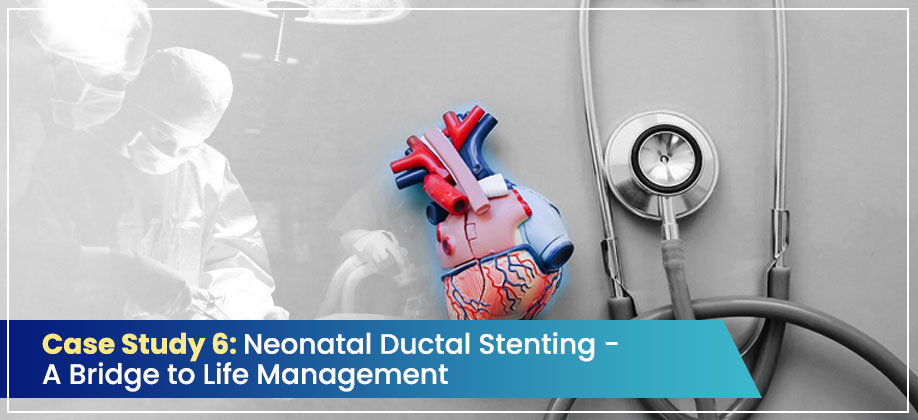This case study highlights the life-saving impact of neonatal ductal stenting as a crucial bridge therapy for infants with PDA-dependent circulation and complex heart lesions, preventing immediate open-heart surgery.
Case Summary
This case study focuses on the collective experience of performing approximately 65 neonatal ductal stenting procedures annually, which has cumulatively saved the lives of nearly 400 neonates. These infants typically present with complex heart lesions and have often been refused treatment from multiple other centers across the country due to the severity and complexity of their conditions. The smallest neonate successfully treated weighed a mere 1.6 kg, presenting significant technical challenges and a “torrential” post-procedure course, yet was ultimately discharged successfully on breast feeding.
Diagnosis
The primary diagnosis in these cases is PDA-dependent circulation, a critical condition where the systemic or pulmonary blood flow relies entirely on the patency of the Patent Ductus Arteriosus (PDA). This is commonly seen in neonates with various complex congenital heart defects where the heart’s anatomy prevents adequate blood flow to either the lungs or the body without the PDA acting as a shunt. Many of these children also have complex heart lesions that make total surgical repair impossible or extremely high-risk in the neonatal period.
Line of Treatment
The line of treatment is neonatal ductal stenting. This procedure is performed as a bridge to therapy, aiming to maintain the patency of the PDA, thereby ensuring vital blood flow until the infant is older and more stable for a definitive corrective open-heart surgery. This interventional cardiology procedure offers a less invasive alternative to immediate surgical palliation in extremely fragile neonates.
Results
The results of neonatal ductal stenting are highly encouraging:
- Prevention of Early Open-Heart Surgery: The procedure successfully prevents the need for open-heart surgery at a very young and vulnerable age.
- Life-Saving Intervention: The high volume of successful cases (approximately 400 lives saved) underscores its critical role in managing these complex conditions.
- Improved Oxygenation and Stabilization: While specific saturation numbers aren’t provided for all cases, the success implies improved oxygenation and hemodynamic stabilization, allowing the infants to grow and become stronger.
- Bridge to Corrective Surgery: Most children undergo corrective open-heart surgery after 6 months to 1 year following the ductal stenting, indicating its effectiveness as a temporary measure.
- Successful Discharge: Even the smallest and most challenging cases, like the 1.6 kg neonate, were successfully discharged.
Despite being a very high-risk procedure, the consistent positive outcomes provide significant hope for these children, enabling them to reach an age and weight where definitive surgical correction can be performed with better prospects. The commitment to continue this work aims to help these children enjoy a normal life.


